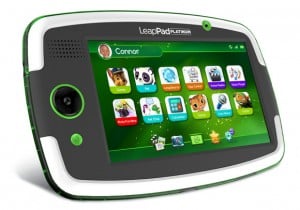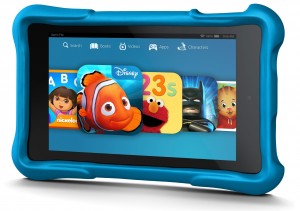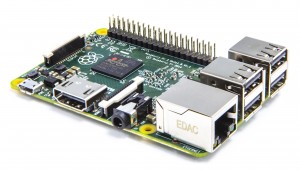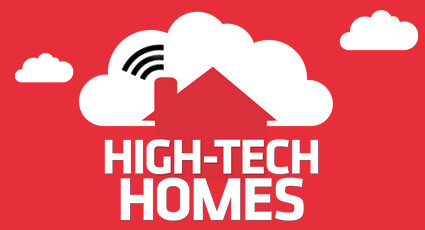Best gadgets for kids of all ages
Affordable devices to help them learn and grow
Advertisement
Affordable devices to help them learn and grow
 One Common Sense Media study indicated that nearly two-fifths of toddlers regularly interact with devices with screens. Small children in the monkey-see, monkey-do phase of life will want to pick up and play with devices, just like they see every day. It might just make sense to work constructively with that tendency rather than try to fight it. LeapFrog makes a range of kid-sized tablets that run purpose-made educational videos, games and ebooks. The LeapPad Platinum ($140) is one of the slicker models, and features a 7-inch touchscreen. The earliest recommended age is three, and there are hundreds of available apps for preschool children. Experts say tots at this age get the most out of programs that teach basic vocabulary and number skills, as well as simple social lessons like sharing—which will come in handy if you have two kids but one LeapPad.
One Common Sense Media study indicated that nearly two-fifths of toddlers regularly interact with devices with screens. Small children in the monkey-see, monkey-do phase of life will want to pick up and play with devices, just like they see every day. It might just make sense to work constructively with that tendency rather than try to fight it. LeapFrog makes a range of kid-sized tablets that run purpose-made educational videos, games and ebooks. The LeapPad Platinum ($140) is one of the slicker models, and features a 7-inch touchscreen. The earliest recommended age is three, and there are hundreds of available apps for preschool children. Experts say tots at this age get the most out of programs that teach basic vocabulary and number skills, as well as simple social lessons like sharing—which will come in handy if you have two kids but one LeapPad.
 Primary school children are bursting with questions, and a tablet can be a handy tool for showing them how to find the answers for themselves. While kids may desire the iPads they have seen adults using, Egbert chose a Kindle Fire device for her children in part because “the cost is probably a lot more appropriate for that age.” The Kindle Fire HD Kids Edition ($149) comes with a sturdy case, and Amazon’s parental controls help restrict the ways it can be used by a child. If you’re presenting a tablet as an educational aid, encourage the child by searching commonsense.org for age-appropriate apps with high educational value ratings, and pre-load the device with a bunch of them before handing the tablet over. Another good idea is to talk with children about safe surfing, why they should stick to kid-friendly social networking sites like Disney’s Club Penguin, and why online bullying is wrong.
Primary school children are bursting with questions, and a tablet can be a handy tool for showing them how to find the answers for themselves. While kids may desire the iPads they have seen adults using, Egbert chose a Kindle Fire device for her children in part because “the cost is probably a lot more appropriate for that age.” The Kindle Fire HD Kids Edition ($149) comes with a sturdy case, and Amazon’s parental controls help restrict the ways it can be used by a child. If you’re presenting a tablet as an educational aid, encourage the child by searching commonsense.org for age-appropriate apps with high educational value ratings, and pre-load the device with a bunch of them before handing the tablet over. Another good idea is to talk with children about safe surfing, why they should stick to kid-friendly social networking sites like Disney’s Club Penguin, and why online bullying is wrong.
 Some British software developers pondered a curious problem some years ago. They had grown up circa the 1970s and ’80s and cut their teeth on computers that required text inputs and encouraged simple programming. There’s no mainstream contemporary equivalent to the Commodore 64, which ran on the BASIC language and was simple to code on. Today’s operating systems are highly automated and most programming languages are impenetrable. If young people are to have a chance of becoming tomorrow’s software engineers, a dedicated device to tinker with can be a helpful on-ramp to that path. Thus was conceived the Raspberry Pi, a deliberately stripped-down computer that has undergone a few updates but no real increase in complexity or price since its debut in 2012. For around $30 (plus the cost of a keyboard, mouse and monitor), a Raspberry Pi 1 A+ acts as a software developing lab for the home. Using the beginner programming language Scratch, a little grown-up help and a purpose-built kit (sold separately), adolescents can create their own games, music composition programs and even primitive robots. Tweens are obsessively social creatures and may crave a fleeting boost in status by owning a smartphone. Giving your adolescent a Raspberry Pi to learn programming might give her a life skill—and thus a leg up on the other kids—that will last a lifetime.
Some British software developers pondered a curious problem some years ago. They had grown up circa the 1970s and ’80s and cut their teeth on computers that required text inputs and encouraged simple programming. There’s no mainstream contemporary equivalent to the Commodore 64, which ran on the BASIC language and was simple to code on. Today’s operating systems are highly automated and most programming languages are impenetrable. If young people are to have a chance of becoming tomorrow’s software engineers, a dedicated device to tinker with can be a helpful on-ramp to that path. Thus was conceived the Raspberry Pi, a deliberately stripped-down computer that has undergone a few updates but no real increase in complexity or price since its debut in 2012. For around $30 (plus the cost of a keyboard, mouse and monitor), a Raspberry Pi 1 A+ acts as a software developing lab for the home. Using the beginner programming language Scratch, a little grown-up help and a purpose-built kit (sold separately), adolescents can create their own games, music composition programs and even primitive robots. Tweens are obsessively social creatures and may crave a fleeting boost in status by owning a smartphone. Giving your adolescent a Raspberry Pi to learn programming might give her a life skill—and thus a leg up on the other kids—that will last a lifetime.
 It may surprise readers over 30 to learn that laptops have become the norm for note-taking in postsecondary classrooms (although some instructors are trying to ban them, likely in vain). It might be an idea to get your teen into the habit of carrying around a laptop while still in high school—while also pointing him toward the growing body of research that says notes written down by hand stick better in one’s memory. Even if a laptop is a second-best choice for note-taking, owning one allows your teen to continue working at the library, at a friend’s house, or at the coffee shop down the street when he just can’t stand being around you anymore. Most teenagers are still working on the whole responsibility thing, and it’s not a bad idea to get them into the habit of backing up their work in the cloud. That way, even if they lose or break their laptop, their work won’t go with it. A Chromebook laptop works off Google’s Chrome OS, which will encourage your teen to save her work to Google Drive and perhaps prevent some lost-homework heartbreak. Computer reviewers have raved about the Toshiba Chromebook 2, which delivers a 1080-pixel screen for $430. If your teen would rather sport a pricey Apple laptop at school, maybe tell him he has to earn the privilege by looking after this one first.
It may surprise readers over 30 to learn that laptops have become the norm for note-taking in postsecondary classrooms (although some instructors are trying to ban them, likely in vain). It might be an idea to get your teen into the habit of carrying around a laptop while still in high school—while also pointing him toward the growing body of research that says notes written down by hand stick better in one’s memory. Even if a laptop is a second-best choice for note-taking, owning one allows your teen to continue working at the library, at a friend’s house, or at the coffee shop down the street when he just can’t stand being around you anymore. Most teenagers are still working on the whole responsibility thing, and it’s not a bad idea to get them into the habit of backing up their work in the cloud. That way, even if they lose or break their laptop, their work won’t go with it. A Chromebook laptop works off Google’s Chrome OS, which will encourage your teen to save her work to Google Drive and perhaps prevent some lost-homework heartbreak. Computer reviewers have raved about the Toshiba Chromebook 2, which delivers a 1080-pixel screen for $430. If your teen would rather sport a pricey Apple laptop at school, maybe tell him he has to earn the privilege by looking after this one first.

Share this article Share on Facebook Share on Twitter Share on Linkedin Share on Reddit Share on Email